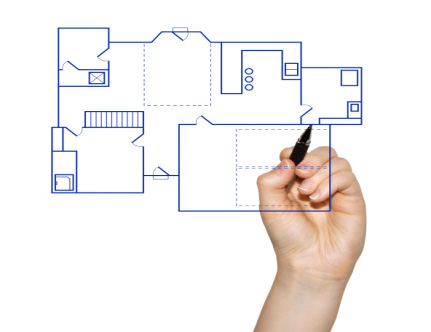BS 8233 Noise Surveys for NEW Developments
British Standard 8233 is guidance on sound insulation and noise reduction for new developments. BS8233 provides information and guidance on the design of buildings for sound insulation and noise reduction in and around new buildings and refurbished buildings undergoing a change of use.
APT Sound Testing undertakes BS8233 noise surveys throughout London and the South East. Our fully qualified and highly experienced consultants can provide expert advice and conduct survey analysis into all aspects of sound, such as investigating complaints into excessive noise and/or a BS8233 Noise Assessments.
We undertake London BS8233 noise surveys on numerous potential housing and other noise-sensitive sites throughout the Capital and the UK. Our acoustic surveys cater for sites that may be exposed to noise from road, rail or air traffic and/or from industrial activity.

We undertake wide range of services from noise assessments through to noise mitigation proposals. Where it is proposed to install new plant or equipment, we undertake noise surveys to determine noise emission limits, in line with Local Authority requirements, and provide advice on mitigation.
As a local company we have an in depth knowledge on Greater London planning permissions and local legislation. Our noise consultants are expertly suited to carry out noise assessments, with a wealth of experience in assessing the sound impact of residential, industrial and commercial businesses in the community.
Noise Surveys for New Developments in London
London noise surveys and report should be submitted during the pre-application process and discussions on planning applications. In many circumstances a planning condition will stipulate that a noise survey will need to be undertaken.
Noise surveys are normally carried out at the design stage of the project prior to the commencement of construction., this is to allow the acoustic design of the building to take into account the local noise levels, i.e. if the local noise levels are quite high then the acoustic design will need to be more robust to mitigate any potential noise problems. Thereafter the local authority may also require post a BS 8182 London noise survey to prove that the noise standards have been achieved within the living rooms and bedrooms.
The following information will usually need to be included within the noise survey report.
-
-
-
-
-
-
-
-
-
- The reason and scope of the report.
- Location plan of the proposed development and likely receptor points such as the nearest residential window/s.
- The noise survey Methodology including the noise monitoring location, the equipment used and the weather conditions during the noise survey.
- Reasons for deviations from standard methods.
- Full table of results.
- A comparison of survey results against the noise standards.
- Recommendations for noise control measures – acoustic barriers etc.
- Full calculations against noise reductions expected to support any suggested noise control measures.
-
-
-
-
-
-
-
-

The Different NEC Noise Exposure Categories (NECs)
There are four Noise Exposure Categories based on the level of noise at the development. The NEC in which the site falls determines to what extent noise should be considered in the granting of planning permission. The NEC(s) are usually determined by monitoring noise levels. Potential mitigation options can then be assessed by calculation, and/or the use of noise modelling. Appropriate noise mitigation can then be incorporated into the development at the design stage.
Problems relating to noise during the planning stages can usually be avoided or resolved with a good, detailed and accurate acoustic assessment report and by accounting for robust mitigation measures where and when required.
Need help with your BS8233 Noise Assessment?
Then please let us know, we listen to our clients’ acoustic needs and present them with practical, cost-effective solution for BS8233 noise surveys as well the precompletion sound testing. This means that we can offer comprehensive and bespoke acoustic consultancy service. More information for BS8233 can be found here.
We use a team of highly skilled and experienced engineers along with the latest Norsonic acoustic equipment (and expert guidance) to ensure our clients are getting a high-quality service every time they decide to get in touch. For more information please check our new guidance for BS8233 noise surveys.
If you have a new development and the local authority has a BS8233 Noise Assessment, then please speak with our noise consultants today. The noise assessment process isn’t intrusive, lengthy or costly. Normally we would leave one of our class 1 sound meters over a 24-hour period, which gathers the necessary acoustic data automatically, which also considers other factors such as construction, setting and external variables. Using acoustic data, we then provide a detailed report and offer valuable advice on mitigations measures if required.
If you would like to know more about or noise impact assessment service, please contact us at info@aptsoundtesting.co.uk or contact Darren directly on 07775 623464. Alternately if you would like more information on noise assessments then please visit our checklist page which has lots of useful information or visit our guidance for BS8233 noise surveys.
